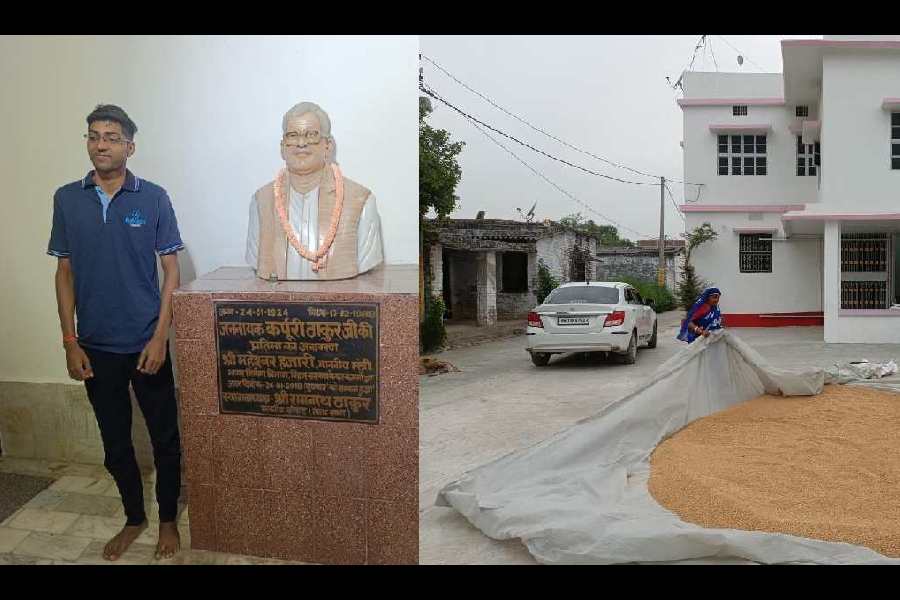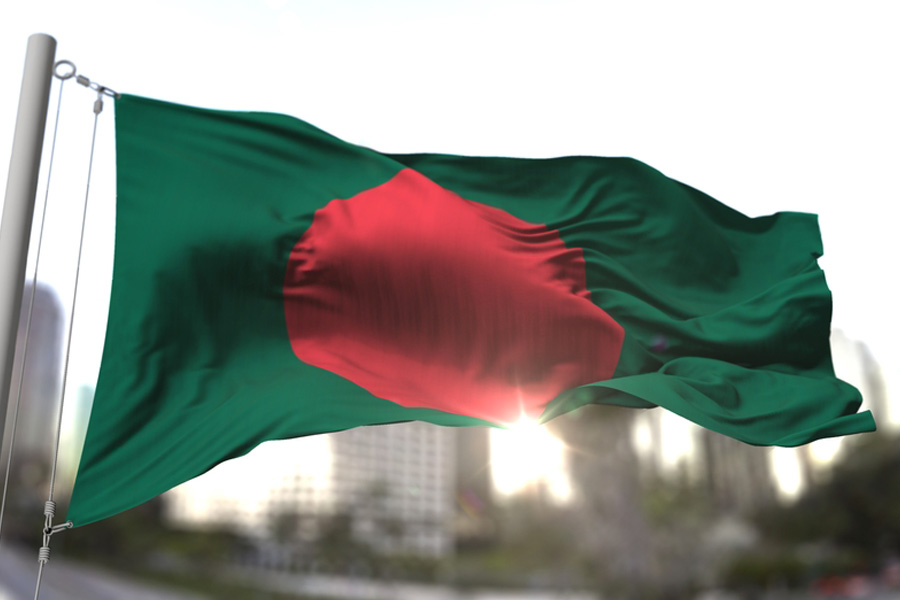“How can someone so towering have a house so simple?” Narendra Modi wrote in one of his blog posts.
The two-time Prime Minister was speaking about two-time former Bihar chief minister Karpoori Thakur, who was chosen for the Bharat Ratna a day ahead of his birth anniversary this January.
The Jan Nayak joined the pantheon of leaders such as Lal Bahadur Shastri, Pandit Madan Mohan Malaviya, Lokpriya Gopinath Bordoloi, and Loknayak Jayaprakash Narayan, who were all honoured with the award posthumously.
A leader who championed equitable distribution of reservation benefits and implemented quotas in jobs for OBCs at least a decade before any nationwide initiative on similar lines was conferred the country’s highest civilian award 36 years after his passing.
The Centre’s recognition of Thakur drew applause and indignation alike with sections of society terming it an attempt by the BJP-led government to woo the Jats of Uttar Pradesh and the Economically Backward Classes (EBCs) of Bihar.
The Telegraph visited Karpoori Gram in Samastipur district, around 100km northeast of Patna, to get a feel of how the residents of the village were dealing with the coveted recognition bestowed upon one of the most articulate leaders of the socialist school by the right-wing BJP government.
Threshing freshly harvested wheat under the blazing sun outside Thakur’s two-storied house, around 10km from Samastipur town, 50-year-old Nisha Thakur, gave a welcome nod.
“Modiji should have come here at least once. He could have done this during his recent visits (to Bihar). Bharat Ratna is fine but paying tributes to him (Thakur) here is like paying him respect. So many prominent leaders have come here. Even chief minister Nitish Kumar comes here every year on January 24 (Thakur’s birth anniversary),” said Nisha, the daughter-in-law of the former CM’s younger brother Ramsogarath Thakur.
She runs an anganwadi centre, while her husband Nityanand Thakur is a clerk at a private college in Karpoori Gram, which was once called Pitaunjhia.
Their son Amrit Raj, 18, who will be taking the Class XII board exams this year, will vote for the first time this election. Raj was invited to the award ceremony in Delhi, along with Thakur’s son Ramnath and other members of the family. Though the family is happy about the Bharat Ratna, they questioned the timing of the award considering Modi has been at the helm of BJP affairs for the past 10 years.
“The Prime Minister had expressed his desire to visit the place when we met him in Delhi. He should have come. Bharat Ratna dene ka chunao mein kuch to fayda milega hi (conferring Bharat Ratna on him will bring some poll gains),” Raj said.
Thakur (January 24, 1924–February 17, 1988) hailed from the underprivileged Nai (barber) caste, categorised under the EBCs. Known for his simplicity, accountability, probity, disdain for wealth and worldly pleasures, empowerment of the downtrodden and a champion of social justice, Thakur was one of those leaders with roots in the freedom movement.
Thakur first became an MLA in 1952 and went on to serve as deputy chief minister and twice as the chief minister of undivided Bihar in the 1970s.
His persona looms so large on national politics that it often forces parties to take cues from his way of running the government. Though his caste comprises around 1.6 per cent of the 13 crore population of Bihar, it is clubbed with the 100-odd EBCs that constitute 36 per cent of the state’s population. This factor is widely believed to have induced the Centre to award him Bharat Ratna in a bid to woo the EBCs.
Visibly, Karpoori Gram looks clean and dustless with regular supply of piped water, electricity and other civic amenities. The place developed after the demise
of the leader, courtesy interventions from chief ministers Bhagwat Jha Azad, Lalu Prasad and Nitish Kumar who took to the chair after his death.
Averse to materialistic highs, Thakur’s original house with a thatched roof and bamboo pillars, even after he became the chief minister, remained a symbol of simplicity and integrity.
Paying tributes to Thakur on his 100th birth anniversary, Modi wrote in the blogpost: “During his tenure as chief minister of Bihar, a decision was taken to build a colony for political leaders but he himself did not take any land or money for the same. When he passed away in 1988, several leaders went to his village to pay tributes. When they saw the condition of his house, they were moved to tears — how can someone so towering have a house so simple!”.
During the terms of Lalu and Nitish, the Bihar government built the present two-storied concrete house. It has a bust of the leader and serves as a memorial.
“Neither Modi nor (Union home minister) Amit Shah or any of the top central leaders of the BJP have come here. It would have been a greater honour than Bharat Ratna. Learning to tread the path of honesty and simplicity shown by Karpooriji will be the real tribute to him,” said an elderly villager.
“Bharat Ratna to Karpoori Thakur has been an attempt by Modi to get EBC votes but they do not understand that he was beyond caste. Such legacy doesn’t fit into one box of recognition,” said D.M. Diwakar, professor and former director of A.N. Sinha Institute of Social Studies.
Samastipur votes on May 13










